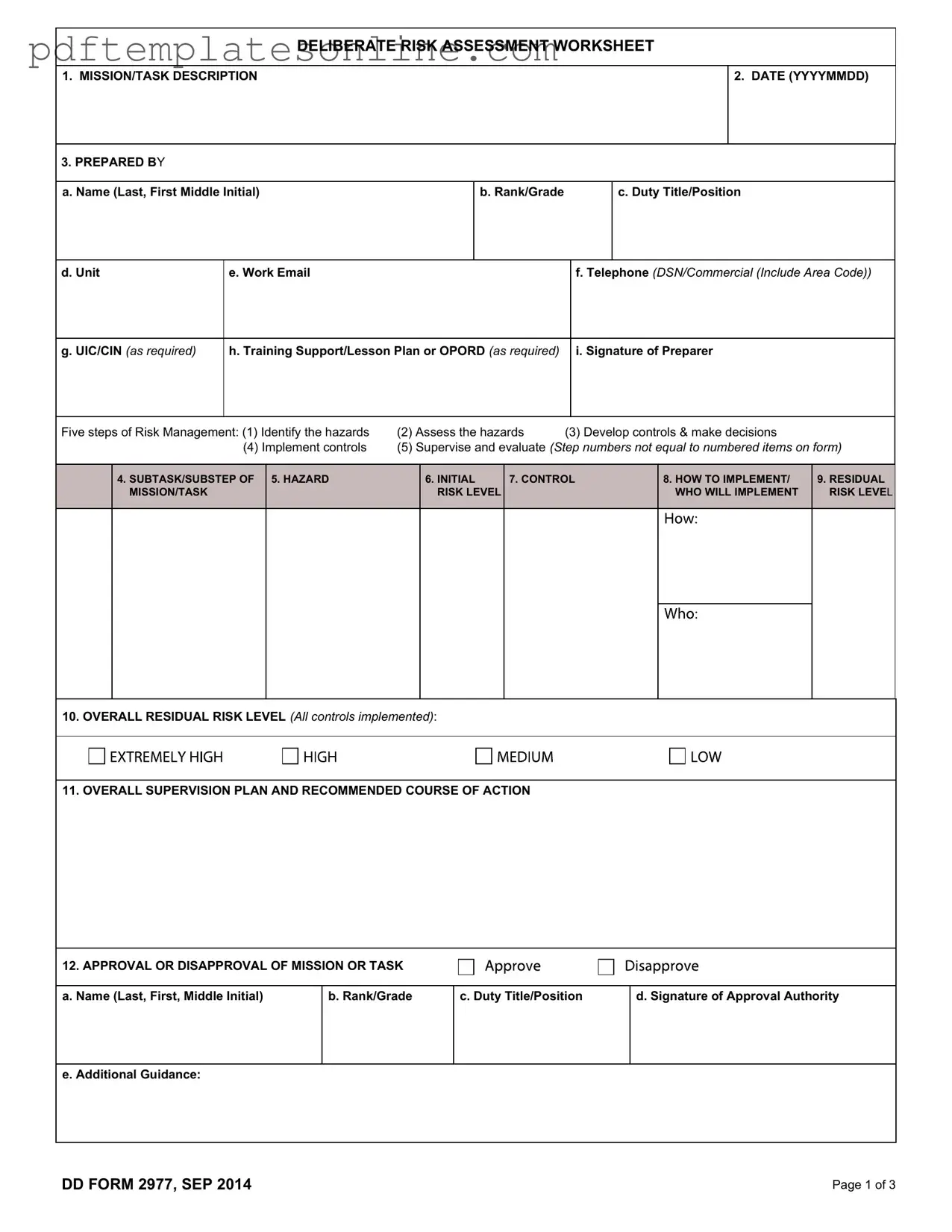Completing the DD Form 2977, known as the Deliberate Risk Assessment Worksheet, requires careful attention to detail. One common mistake is failing to provide a clear mission/task description. This section is crucial as it outlines the overall purpose of the risk assessment. A vague or incomplete description can lead to misunderstandings about the risks involved, potentially compromising safety and mission effectiveness.
Another frequent error involves the initial risk level assessment. Individuals often misinterpret the risk assessment matrix, leading to inaccurate evaluations of probability and severity. This miscalculation can result in either an underestimation or overestimation of risks, which directly impacts the effectiveness of mitigation strategies. It is essential to carefully analyze each hazard to assign the correct initial risk level.
Additionally, many people neglect to specify who will implement the controls. This information is critical for accountability and ensures that the right personnel are tasked with managing the identified risks. Without this clarity, there may be confusion during implementation, potentially leading to lapses in safety measures.
Another common oversight is in the residual risk level determination. After controls are implemented, individuals sometimes fail to reassess the risk level accurately. This step is vital, as it provides insight into whether the implemented controls effectively reduced the risks to acceptable levels. An inaccurate residual risk assessment can lead to continued exposure to dangers that should have been mitigated.
Lastly, the supervision plan and recommended course of action section is often inadequately completed. This part should detail specific supervisory responsibilities and a clear course of action based on the overall risk assessment. If this section lacks detail, it may result in poor oversight and ineffective management of the risks, ultimately jeopardizing mission success.
